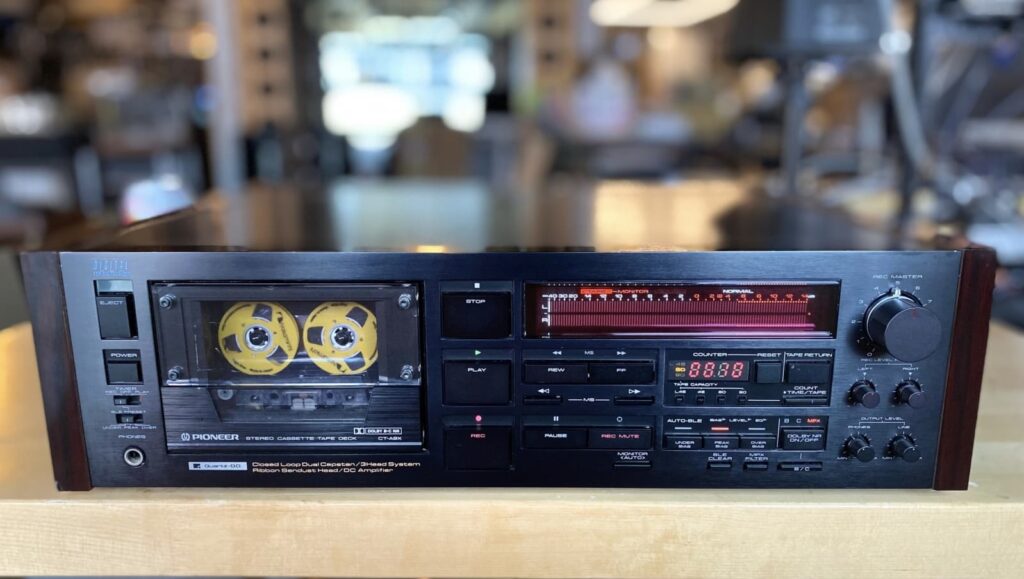In a digital age dominated by streaming and lossless audio formats, the reemergence of cassette tapes as a desirable medium is both surprising and intriguing. What was once considered an outdated technology is now back in vogue, becoming a cultural artifact of nostalgia, a tangible connection to past eras of music, and a symbol of DIY aesthetics. But as cassettes gain popularity, a curious paradox has emerged: the revival of tapes has outpaced the availability of tape decks, creating a new set of challenges for enthusiasts and collectors alike.
Why Cassette Tapes Are Back in Fashion
The resurgence of cassette tapes can be attributed to several key factors. First and foremost is the influence of nostalgia. For millennials and Gen Z, cassettes represent a tangible format reminiscent of childhood road trips, homemade mixtapes, and the early days of music discovery. This retro allure has captivated both older generations who lived through the cassette’s heyday and younger listeners curious about analog technology.
Another reason for the comeback is the cultural cachet that cassettes carry. In contrast to the sleekness of streaming, tapes have an artisanal quality that appeals to the DIY ethos prevalent in underground music scenes. Small labels and independent artists have embraced the format as a way to release limited-run albums, creating a sense of exclusivity and authenticity. The imperfections of cassette sound—hiss, tape flutter, and occasional warbles—lend the music an added layer of intimacy, offering a stark contrast to the precision of digital audio.
Furthermore, the visual element of cassette tapes—its small, customizable cases—serves as a unique canvas for album art. Musicians are using tapes to offer fans more than just music, crafting a physical artifact that holds visual and tactile appeal. This experience of holding and playing a tape can create a deeper connection between the listener and the music, an experience that cannot be replicated through streaming or digital downloads.
The Decline of Tape Decks and the Struggle to Play New Releases
While the resurgence of cassettes has been met with enthusiasm, the scarcity of functioning tape decks presents a significant obstacle. After CDs replaced tapes as the dominant music format in the 1990s, manufacturers shifted focus, and by the early 2000s, production of quality tape decks dwindled. As a result, many of the decks that are still available on the market are either aging models or cheaply made units that lack the durability and sound quality of their predecessors.
For audiophiles and serious collectors, the problem is compounded by the limited availability of high-quality decks from trusted brands like Nakamichi, Pioneer, and TEAC. Finding a well-maintained vintage deck has become a costly endeavor, with prices for refurbished models skyrocketing as demand rises. This issue is further exacerbated by the specialized maintenance that tape decks require—worn belts, malfunctioning motors, and head alignment issues all require the expertise of experienced technicians, who themselves are becoming a rarity.
The difficulty of finding functional tape decks has led some enthusiasts to seek out alternatives. Some opt for portable Walkman players, which offer a more accessible entry point into cassette listening, albeit with limitations in sound fidelity and durability. Others turn to crowdfunding campaigns and niche startups attempting to produce new tape decks. However, these modern solutions often fall short of expectations, either due to inconsistent build quality or the high costs associated with low-volume manufacturing.
A Market of Paradoxes and Potential Solutions
The paradox of the cassette revival is clear: while the demand for tapes is on the rise, the infrastructure needed to support that demand has yet to catch up. Cassette tapes are being produced in ever-increasing quantities, with new albums and reissues alike being released on the format. Yet, without access to reliable playback equipment, much of this new music is effectively unplayable for a growing segment of the audience.
One potential solution is the investment in refurbished vintage decks. Communities of audiophiles and technicians have formed around this niche, sharing resources, providing repair services, and educating newcomers on how to maintain their own decks. Social media platforms and forums like TapeHeads.net have become invaluable sources of information, helping collectors navigate the complexities of sourcing parts, aligning heads, and optimizing playback.
Manufacturers have also begun to take note. Some brands, such as TASCAM, have reintroduced tape decks aimed at both professional and consumer markets. While these new units can fill the void left by discontinued models, they are often priced at a premium, and their build quality can be hit or miss compared to the classic decks of the 1980s and 1990s.
Impression
The cassette tape’s resurgence reveals a broader cultural trend towards rediscovering analog formats. Just as vinyl made an unexpected comeback a decade ago, the return of cassettes signifies a desire for physicality and authenticity in an era defined by the intangibility of digital media. Whether it’s the ritual of flipping a tape, the satisfaction of pressing the “Play” button, or the joy of rediscovering an old mixtape, cassettes offer experiences that streaming simply cannot.
For now, the challenge for tape enthusiasts lies in ensuring that the hardware keeps pace with the growing interest. As the market adapts, we may see more collaborations between small-scale manufacturers and independent labels, new crowdfunding campaigns for innovative tape decks, and a renewed interest in DIY repairs. Meanwhile, communities of collectors and technicians will continue to keep the legacy of tape decks alive, ensuring that this medium remains accessible to future generations of listeners.
The resurgence of cassette tapes is more than just a passing fad—it’s a revival rooted in a longing for connection and a celebration of imperfection. With creativity and passion, the cassette community can overcome the challenges of a dwindling supply of tape decks, making room for a new generation of tape aficionados. As tapes spin once more, they carry with them the stories, sounds, and sentiments of an era long past, inviting us to press play and embrace a slower, more deliberate way of listening.
No comments yet.







